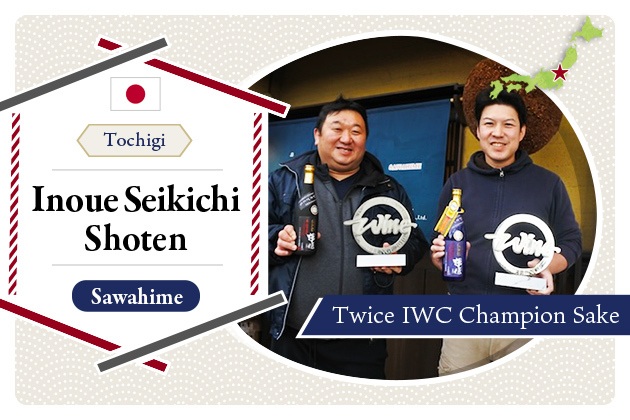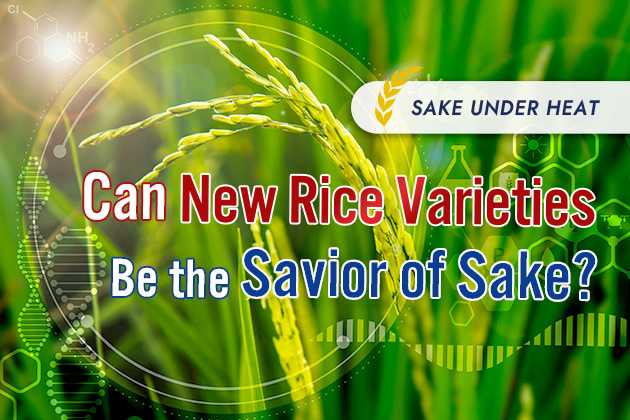
2024.04
17
Sake is 80% Water - Learn the Difference between Soft and Hard Water, and How It Affects the Taste
Sake is made from three main ingredients: rice, rice koji, and water, of which water accounts for the largest percentage. About 80% of sake is made from water.
In addition to being used as a raw material for sake, sake brewing uses a lot of water for a wide range of purposes, such as washing rice and dilution, and the total amount of water required is as much as 50 times the total weight of rice. Water is an indispensable element in making delicious sake.
Because so much water is used, the influence of the properties of water on the flavor of sake can be significant. In this article, we will learn about the relationship between water and sake.
Difference between soft, medium-hard, and hard water
One indicator of the properties of water is hardness. Hardness is an indicator of the total calcium and magnesium content among the mineral components in water. Water with relatively low mineral content is called soft water, those with medium mineral content are called medium-hard water, and those with high mineral content are called hard water. You may see soft water or hard water on the labels of bottled waters.
What criteria are used to classify soft, medium-hard, and hard water? The classification criteria vary slightly from country to country, but the World Health Organization (WHO) water quality guidelines are as follows:
Soft water : Less than 60ml/g
Medium-hard water : Less than 120 ml/g
Hard water : Less than 180ml/g
Very hard water : 180ml/g or more
Water tastes different depending on its hardness. Soft water tastes mild and almost tasteless, while hard water tastes slightly bitter. Since soft water is abundant in Japan, many people may feel that soft water tastes more like what they are used to.
Influence of hardness on the taste of sake
How do differences in water hardness affect the taste of sake? Let's compare the characteristics of sake brewed with soft water and sake brewed with hard water.
Sake brewed with soft water
Sake made with soft water, which has low mineral content, tends to be mellow on the palate, just like the water itself. Sake made with soft water tends to be delicate and light, giving the impression of lightness and softness.
Sake brewed with hard water
Making sake with hard water, which is rich in minerals, produces flavor and sharpness. It tends to produce a rich, dry sake with a strong presence. The balance of flavor tends to be accentuated by a beautiful acidity.
Hardness of the famous brewing region
Knowing how water hardness affects the taste of sake, you may be wondering, "What kind of water is used in famous brewing regions?" The following is a list of famous sake brewing regions and the hardness of the water used for brewing sake. Here, we will introduce the hardness of water used for brewing sake in some of the most famous sake-producing regions.
Nada: Around 100
The water used for Nada sake is called miyamizu and has been famous since the Edo period as a mineral rich water that does not easily lead to spoilage. Miyamizu is medium-hard water, which is quite close to hard water in terms of the above classification.
The abundance of minerals in Miyamizu makes the yeast more active, resulting in a dry sake with a distinct flavor profile. Because of this characteristic, Nada sake is traditionally called "Otoko (male) sake in Japan.
Fushimi: Around 80
Fushimi is often compared to Nada as a famous sake brewing area. The water used for sake brewing in Fushimi is called gokosui. It has a lower hardness than Nada's miyamizu and is classified as a medium-hard water, which is close to soft water.
The relatively low mineral content of the water allows fermentation to proceed slowly, resulting in a fine, soft taste. Because of these characteristics, Fushimi sake was called Onna (female) sake.
Saijo, Hiroshima: Around 30
The water in Hiroshima is soft, with much lower hardness than that of Fushimi. In the past, sake brewing was considered difficult with such low-hardness water. However, in 1898, Hiroshima brewer Senzaburo Miura developed the "soft-water brewing method," and since then Hiroshima has been known as a sake brewing center along with Nada and Fushimi.
The soft-water brewing method produces light, aromatic sake by strictly controlling temperature and humidity to minimize bacterial contamination of the koji mold, fermenting at low temperatures to inhibit the growth of wild yeast, and sterilizing and drying the equipment used to prevent microbial contamination. Some studies have positioned this brewing method as the origin of ginjo sake, which is still popular today.
Reference: Hiroshima Kokusai Gakuin University Research Report, Volume 49, "Excellent Biotechnology from Hiroshima, Water Chemistry and Microbiology of Soft Water Brewing Method," Ken Sasaki, Kei Sasaki (2016)
Innovations at the brewery regarding water quality
In order to produce delicious and safe sake, sake breweries conduct annual water quality inspections and make every effort to use water that matches the quality of sake they are aiming for. Specifically, the water used for sake brewing is subject to stricter water quality standards than tap water, as follows:
Requirements for brewing water
Color : Clear and colorless
Smell and taste : No abnormality
Iron : 0.02 ppm or less, preferably undetectable
Manganese : 0.02 ppm or less
Nitrite-Nitrogen : Not detected
pH : Neutral or slightly alkaline
Ammoniacal nitrogen : Not detected
Bacterial acidity : less than 2 ml
Bacterial acidophilus : Not detected
Coliforms : Not detected
Source: Brewing Society of Japan, "Standard Analysis Method Commentary of the National Research Institute of Alcohol Beverages" Besides this, annual water quality inspections must also meet the standards for water used in food production based on Notification No. 482 of the Ministry of Health, Labour and Welfare regarding the Food Sanitation Law.
Next, learn about the various techniques that are incorporated to keep the water used for sake clean and suitable for fermentation.
Filtering
Brewers use activated carbon filters and other filters to remove substances (iron, manganese, etc.) that adversely affect the taste of sake. They use the most appropriate filter for the condition of the water before processing and the quality of water they are aiming for.
Component adjustment
Sake brewing water requires three types of essential inorganic salts: potassium, magnesium, and phosphorus, which are necessary for the propagation of yeast. When these substances are lacking in water, brewers can add them only in quantities that are effective in promoting fermentation.
Others
Sometimes, brewers remove certain constituents by performing dehardening using the ion exchange resin method or iron removal using the aeration method, in which air is blown in.
Summary
As seen so far, the substance of water plays a very important role in sake. In addition to the variety of rice and type of yeast, the flavor of sake varies greatly depending on the composition of the water.
Once you find a sake that you like, you may find it interesting to research the water in the area surrounding the brewery.
Pickup Articles
2019.01.18
2019.01.25
Trending Articles
Popular Articles
Recent Articles













